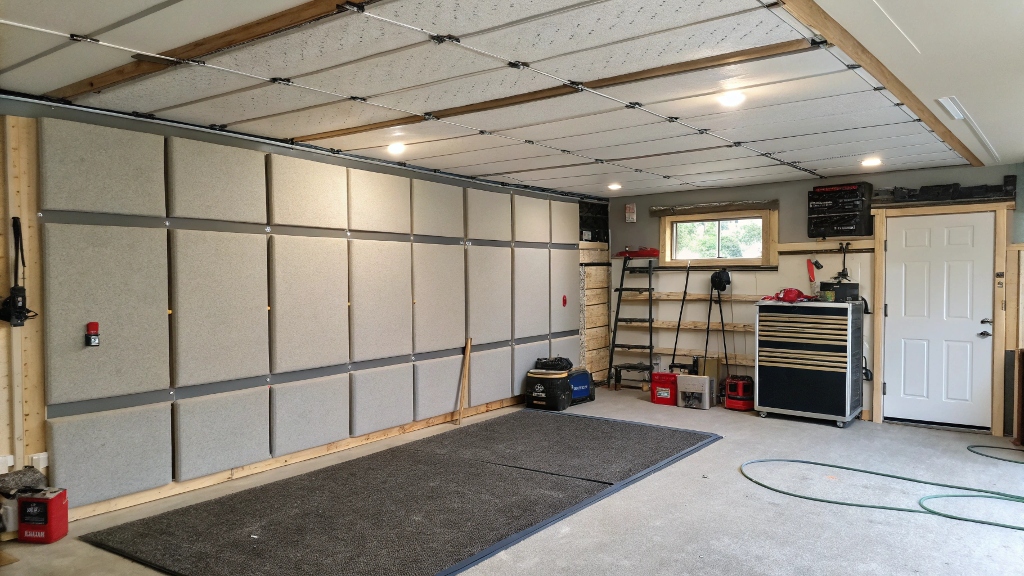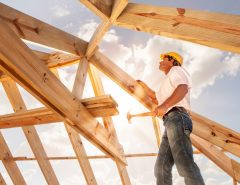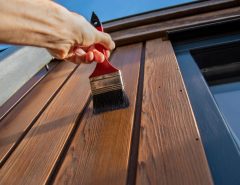Imagine turning your noisy garage into a peaceful workspace where creativity flows uninterrupted. Whether you’re a musician, a DIY enthusiast, or a remote worker, soundproofing your garage workspace can transform it into a productive haven. The constant hum of traffic, neighbor’s lawnmowers, or household chatter can disrupt focus. By soundproofing, you block these distractions, creating a calm environment. I once struggled with noise while working on a podcast in my garage, but simple soundproofing techniques made all the difference. In this guide, we’ll explore practical steps to soundproof your garage workspace, using budget-friendly materials and expert tips. Let’s dive into how to make your garage a quiet sanctuary for work and creativity.
Why Soundproofing Your Garage Workspace Matters
A quiet workspace boosts focus and productivity. Garages, often built with thin walls, let in external noise easily. According to a 2023 study by the Acoustical Society of America, workplace noise can reduce productivity by up to 20%. Soundproofing your garage workspace minimizes distractions, making it ideal for tasks requiring concentration, like recording or woodworking.
Additionally, a soundproof garage protects your neighbors from noise you create, such as power tools or music. My neighbor once complained about my late-night guitar sessions until I soundproofed my garage. By addressing both incoming and outgoing noise, you create a harmonious environment. Soundproofing also adds value to your home, as buyers appreciate versatile, quiet spaces. Let’s explore how to assess your garage’s soundproofing needs effectively.

Assessing Your Garage’s Soundproofing Needs
Before soundproofing, evaluate your garage’s noise sources. Are you battling traffic sounds, neighborhood chatter, or internal echoes? Walk around your garage and listen carefully. Note areas where noise leaks in, like windows, doors, or thin walls. For instance, my garage had gaps around the door that let in street noise.
Next, consider your workspace’s purpose. A podcast studio needs more soundproofing than a woodworking shop. According to a 2022 report by Soundproofing Solutions, garages typically require 30–50% noise reduction for effective workspaces. Use a decibel meter app to measure noise levels. This helps prioritize areas to address, like sealing gaps or adding insulation. By understanding your garage’s unique challenges, you can choose the right materials and methods for a quieter workspace.
Choosing the Right Soundproofing Materials
Selecting the right materials is key to soundproofing your garage workspace. Common options include acoustic foam, mass-loaded vinyl, and weatherstripping. Acoustic foam absorbs echoes, while mass-loaded vinyl blocks external noise. For budget-conscious folks, fiberglass insulation works well. I used affordable weatherstripping to seal my garage door gaps, cutting noise significantly.
Here’s a quick guide to materials:
- Acoustic Foam Panels: Absorb internal echoes; ideal for recording spaces.
- Mass-Loaded Vinyl: Heavy, flexible material to block sound; great for walls.
- Weatherstripping: Seals gaps around doors and windows; cost-effective.
- Fiberglass Insulation: Insulates walls; budget-friendly but requires careful installation.
According to the National Institute of Building Sciences, combining materials increases soundproofing effectiveness by 40%. Research your options and match them to your budget and needs.
Step-by-Step Guide to Soundproofing Your Garage
Step 1: Seal Gaps and Cracks
Start by sealing gaps around doors, windows, and walls. Small openings let noise sneak in. Use weatherstripping for doors and caulk for cracks. I sealed my garage door’s edges with foam tape, reducing traffic noise noticeably. Silicone caulk works well for wall cracks. This step is affordable and quick, often cutting noise by 10–15 decibels.
Step 2: Insulate Walls and Ceilings
Adding insulation to walls and ceilings blocks sound effectively. Fiberglass batts or rigid foam boards are popular choices. Install them between wall studs or on ceilings. My garage’s thin walls amplified street noise until I added fiberglass insulation, which dampened it significantly. Ensure proper installation to avoid gaps, as even small spaces reduce effectiveness.
Step 3: Upgrade Windows and Doors
Windows and doors are common noise entry points. Replace single-pane windows with double-pane ones to block sound. For doors, consider solid-core options or add a soundproofing curtain. A 2021 study by the Journal of Building Acoustics found double-pane windows reduce noise by up to 30%. These upgrades can be pricier but are worth it for heavy noise issues.
Adding Acoustic Treatments for Better Sound Quality
Beyond blocking noise, acoustic treatments improve sound quality inside your garage. Echoes can make conversations or recordings unclear. Acoustic foam panels or bass traps absorb excess sound waves. I hung foam panels in my garage studio, and my podcast audio became crisper instantly.
Additionally, carpets or rugs on the floor reduce echo from hard surfaces. Hang heavy curtains over windows to dampen sound further. For advanced setups, consider diffusers to scatter sound waves evenly. These treatments create a professional workspace, especially for musicians or content creators. Combining treatments with insulation ensures a quiet, high-quality workspace.
Budget-Friendly Soundproofing Tips
Soundproofing doesn’t have to break the bank. Start with DIY solutions like sealing gaps with weatherstripping or using heavy blankets as temporary curtains. I used old moving blankets to cover my garage windows, cutting noise on a tight budget. Repurpose household items like rugs or bookshelves filled with books to absorb sound.
For affordable materials, buy acoustic foam in bulk or choose fiberglass insulation over pricier options. Shop at local hardware stores for deals on caulk or weatherstripping. According to a 2023 HomeAdvisor report, DIY soundproofing costs $100–$500, compared to $1,000+ for professional jobs. With creativity, you can soundproof your garage workspace effectively without overspending.
Maintaining Your Soundproof Garage Workspace
Once soundproofed, maintain your garage workspace to keep it quiet. Regularly check weatherstripping and caulk for wear, as they degrade over time. I noticed my door’s weatherstripping peeling after a year and replaced it to maintain silence. Clean acoustic panels to prevent dust buildup, which reduces their effectiveness.
Additionally, avoid creating new gaps when installing shelves or equipment. Use soundproofing mats under heavy machinery to minimize vibrations. Regular maintenance ensures long-term noise reduction, keeping your workspace productive. Schedule inspections every six months to catch issues early. A well-maintained garage workspace stays quiet and functional for years.
Conclusion
Soundproofing your garage workspace transforms it into a peaceful retreat for work or creativity. By sealing gaps, insulating walls, and adding acoustic treatments, you can block distractions and enhance focus. My podcast recordings improved dramatically after soundproofing my garage, proving its value. With budget-friendly materials and regular maintenance, anyone can create a quiet haven. Whether you’re a musician or a remote worker, a soundproof garage workspace boosts productivity and comfort. Ready to start? Share your soundproofing journey in the comments or spread the word by sharing this article with others looking to quiet their workspace!
Read More Also: DIY Home Décor: Easy Projects to Personalize Your Space and Make Your House a Home
FAQs
How much does it cost to soundproof a garage workspace?
DIY soundproofing costs $100–$500, while professional jobs range from $1,000–$2,000, depending on materials and garage size.
What’s the easiest way to start soundproofing my garage?
Begin by sealing gaps around doors and windows with weatherstripping or caulk for quick, affordable noise reduction.
Can I soundproof my garage without major renovations?
Yes, use weatherstripping, heavy curtains, or rugs to reduce noise without altering your garage’s structure.
How effective are acoustic foam panels for soundproofing?
Acoustic foam absorbs echoes but doesn’t block external noise. Combine with insulation for best results.
Do I need professional help to soundproof my garage?
DIY methods work for most garages, but hire professionals for complex issues like heavy traffic noise.
Discover More: The Cutest Crochet Projects to Inspire You




